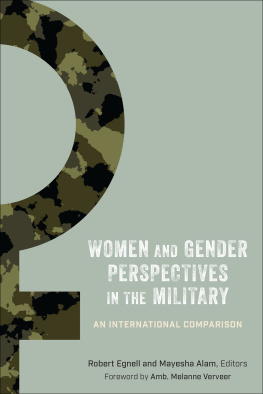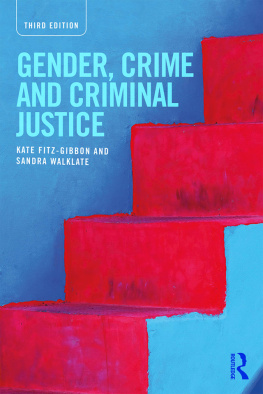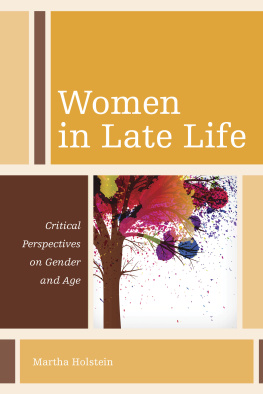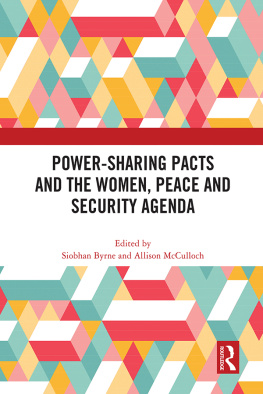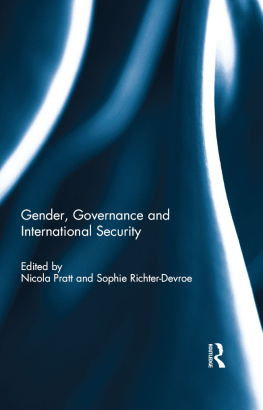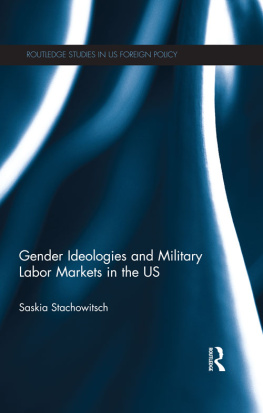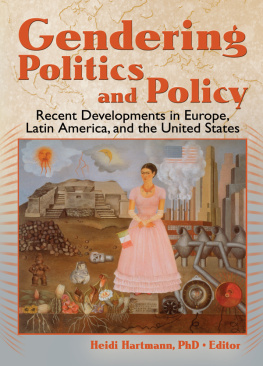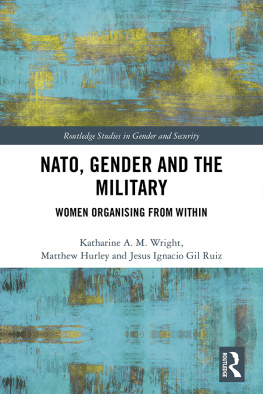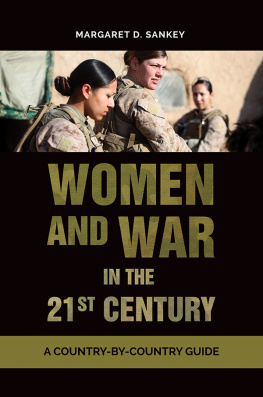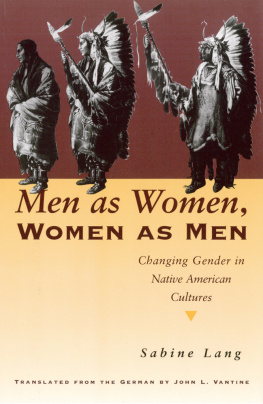2019 Georgetown University Press. All rights reserved. No part of this book may be reproduced or utilized in any form or by any means, electronic or mechanical, including photocopying and recording, or by any information storage and retrieval system, without permission in writing from the publisher.
The publisher is not responsible for third-party websites or their content. URL links were active at time of publication.
Library of Congress Cataloging-in-Publication Data
Names: Egnell, Robert, editor. | Alam, Mayesha, 1988 editor.
Title: Women and gender perspectives in the military : an international comparison / Robert Egnell and Mayesha Alam, editors.
Description: Washington, D.C. : Georgetown University Press, 2019. | Includes bibliographical references and index.
Identifiers: LCCN 2018004910 (print) | LCCN 2018033463 (ebook) | ISBN 9781626166264 (pbk. : alk. paper) | ISBN 9781626166257 (hardcover : alk. paper) | ISBN 9781626166271 (ebook)
Subjects: LCSH: Women and the military. | Women soldiers. | Armed ForcesSocial aspects. | Sociology, Military.
Classification: LCC U21.75 (ebook) | LCC U21.75 .W65 2019 (print) | DDC 355.0082dc23
LC record available at https://lccn.loc.gov/2018004910
This book is printed on acid-free paper meeting the requirements of the American National Standard for Permanence in Paper for Printed Library Materials.
20 199 8 7 6 5 4 3 2 First printing
Printed in the United States of America
Cover design by Martyn Schmoll.
FOREWORD
The prevention of conflict, the protection of human rights, and the promotion of peace and security worldwide cannot be achieved without the full and equal participation of women. Systems and processesat international and national levelsmust be adjusted to, at once, include women and, at the same time, take into account the roles and experiences of both men and women. This was the historic clarion call issued by the international community in October 2000, when the UN Security Council unanimously adopted Resolution 1325 on Women, Peace, and Security. Though much progress has been made globally, the promise and potential of UNSCR 1325 remains unfulfilled. This is especially true in the field of military operations, which remains a largely male-dominated arena that continues to be held backin both effectiveness and equal opportunityby cultural, bureaucratic, and resource barriers.
When the US National Action Plan (NAP) on Women, Peace, and Security was launched in December 2011, thensecretary of state Hillary Rodham Clinton emphasized the role of military institutions in bridging the gap between the security and agency of women and the peace and stability of nations. As the inaugural US ambassador for global womens issues, I was privileged to help lead the interagency effort that culminated in the NAP. I remember vividly the discussions and debates with colleagues in the White House and the Pentagon that surrounded the drafting of the sections on reforms to the US armed forces. We recognized early on that the US militarythe most powerful in the worldhad a significant role to play in international security and, thus, ought to set an example in the implementation of UNSCR 1325 and its successive resolutions. To underscore this point, the president issued an accompanying executive order to the NAP. As was true then and remains so today, the inclusion of women, and the integration of gender perspectives into military institutions, has implications for a range of operational objectivesfrom peacekeeping to national defense, from responding to terrorist attacks to preventing violent extremism, from managing transnational threats to growing peaceful and stable societies. The US Congress later recognized the importance of womens agency to peace and security when it adopted the Women, Peace, and Security Act of 2017, which is now law.
In recent years I have been serving as the special representative for gender for the Chairpersons in Office of the Organization for Security and Cooperation in Europe (OSCE), the largest regional security organization in the world. The OSCE has been increasingly focused on promoting womens participation in the security sectorin the military, policing, border security, and management as well as in conflict resolutionunderstanding that this is a matter of necessity, critical for operational effectiveness. So too the North Atlantic Treaty Organization (NATO) is committed to raising the profile of women at all levels of the alliance and ensuring womens participation in its training and operations.
This book had its beginnings in a symposium on Bridging Theory and Practice organized by the Georgetown University Institute for Women, Peace, and Security. It represents a very timely contribution to our collective understanding of women and gender in military operations. Robert Egnell and Mayesha Alam do a superb job as editors of the volume. Each of its highly informative chapters takes the reader on a journey through the history, politics, and evolution of the military institution in question. I would recommend this book as essential reading to students, scholars, practitioners, and policymakers alike. The case studies highlight opportunities, challenges, progress, and lessons that explain how, why, and to what extent military operations have adapted to and been shaped by womens increased participation as well as gender mainstreaming. Egnell and Alam draw our attention to the internal and external push and pull factors that brought about change in each context, pointing to noteworthy ideational, structural, and material factors. In doing so, they keep our focus on not only the normative but also strategic drivers at play.
At the same time, the edited volume is much more than the sum of its parts. As a collection of cross-regional country experiences, Egnell and Alams book identifies catalysts for change at the national and international levels. The analyses here, particularly the chapters on UN and NATO, also reiterate how countries working together, beyond borders and in pursuit of common goals, can advance gender mainstreaming and womens participation. The obstacles for international cooperation may seem steep, but the stakes to do so efficiently are even higher. It is critical to close the gender gap in military operations.
I congratulate the editors and contributing authors of this publication for their efforts and commitment to deepening knowledge about women, peace, and security. The ambitious task they take on in this book offers insights about what has been achieved and what remains to be done in the cases covered and beyond.
Ever onward,
Melanne Verveer
US Ambassador for Global Womens Issues (200913)

